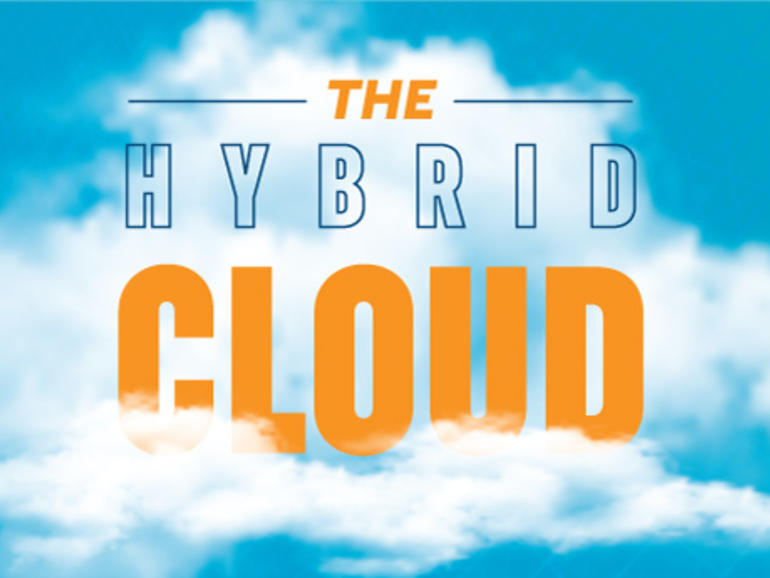Cloud computing is being adopted by significant majority of organizations. The extent of cloud adoption can be easily understood by the annual revenue figures posted by Amazon Web Services or Microsoft Azure that are in billions of dollars. We can also consider Oracle Cloud that is targeting enterprise customers.
This brings us to the much awaited development of the hybrid cloud model that is going to be delivered by partnership between AWS which is reputed to be a cloud giant and VMware a big name in virtualization. More and more IT architects and DevOps managers are being requested by CIOs to build a hybrid cloud model for the organization.

Instant and superior access to analytics and insights
VPs and CIOs of large organizations find it difficult to generate faster analytics related to the monthly sales or production figures in order to empower sales or production teams. These analytics are helpful for deriving meaningful patterns in various geographies and locations as far as the sales or production figures are concerned.
The sales or production patterns can be associated with multiple variables to chalk out plans to improve the situation further. Usually, and exercise of this sort needs to be carried out only once in a month. It can be an overwhelming task to collect massive volume of data from diverse sources and the infrastructure of organization can prove to be an impediment.
Such workloads need a huge compute infrastructure whenever required. Installing such an infrastructure at data center can be a costly proposition. Hybrid cloud solutions such as Oracle Cloud or AWS can be leveraged to get the work done, since the cloud hosting can be commissioned only for sake of executing accomplishing such workloads. Hybrid clouds accelerate speed of execution of analytics and help enterprises stay ahead of competition.
Generating data for compliance
Many organizations need to create third copy of the data for sake of compliance and the production team needs such data in environment which is away from data centers. This can result in backup teams creating tapes with investment of finances as well as time. This activity also requires consumption of infrastructure and human resources. Alternatively, you can use cloud object storage facility to obviate use of tapes. Cloud object storage is also able to deliver faster restore tests on periodic basis.
Cloud mitigates time to market
In most of the cases, organizations have already migrated their on-premise Microsoft Exchange as well as SharePoint to Office 365 and need only a SaaS service offering in a packaged form. With critical applications already being moved to cloud and few custom applications at own data center, the IT teams of such organizations can perform testing and development tasks in cloud. They can even leverage multiple clouds to reduce release cycle of applications. It is found that enterprises can beat the competition by introducing new solutions with new features faster than ever.
Leveraging different cloud versions
Cloud can offer diverse opportunities with help of different models and versions that can cater to specific needs. If you are more concerned about security of data, then it is possible to achieve remarkable security with help of hybrid cloud adoption. In fact, majority of data management use cases can be migrated to cloud from data center environment. This can also reduce need to have an additional infrastructure of data center for replication and storage of data.
Instead of creating a data center infrastructure that would lie idle for most of the period until there is a workload related to DR, one can procure on-demand cloud for testing and developing DR solutions. IT teams can choose different clouds to develop different use cases or applications.
Saving costs and improving security
Many organizations have been able to save huge upfront costs of building on site IT infrastructures by leveraging hybrid cloud hosting solutions. Public clouds can be used for handling sporadic bursts of demands and pay as per consumption.
Contrary to the general belief that cloud is less secure, it is observed that cloud hosting provides greater security than on-premise infrastructure. This has also been confirmed by reports from Tech Target that goes on to confirm that service providers are more secure than on-premise facilities.
Read More at : Significant Attributes of Hybrid Cloud BDR FOR SMBs
Improved agility
Organizations can benefit from agility of hybrid clouds. Enterprise websites can deal with excessive traffic without impacting availability and page load speeds by leveraging hybrid clouds. Cloud is also appreciated for its extensive accessibility irrespective of time. It is however observed that building hybrid cloud is not every enterprises cup of tea since the process can be overwhelming for smaller enterprises.
Conclusion
Organizations are able to accelerate development of new projects by leveraging hybrid cloud. Instead of investing huge efforts and tine for performing capacity management of underlying infrastructure, organizations are able to pay undiluted attention to ongoing projects.
Since the migration to hybrid is a major decision, it needs to be approached with care and homework. This will ensure that the organization is able to reap amazing advantages o hybrid cloud.
Read More at : Difference between Hybrid Cloud and Multi Cloud






 Live Chat
Live Chat